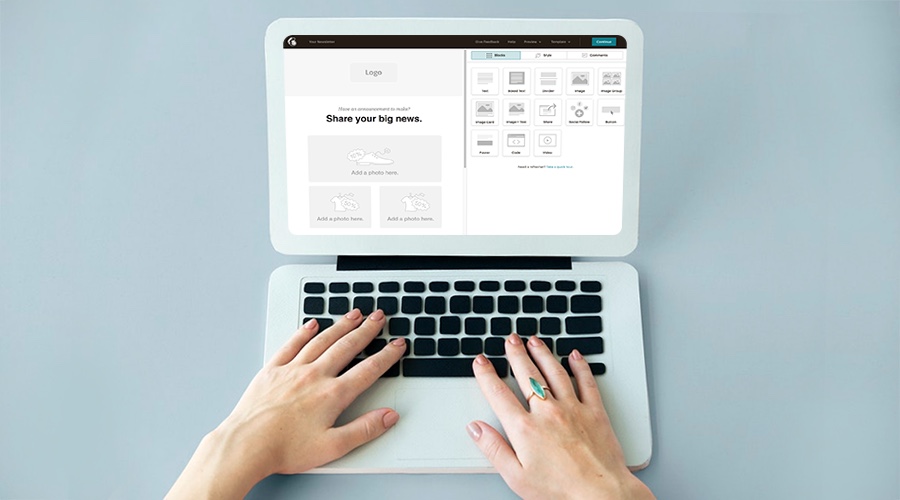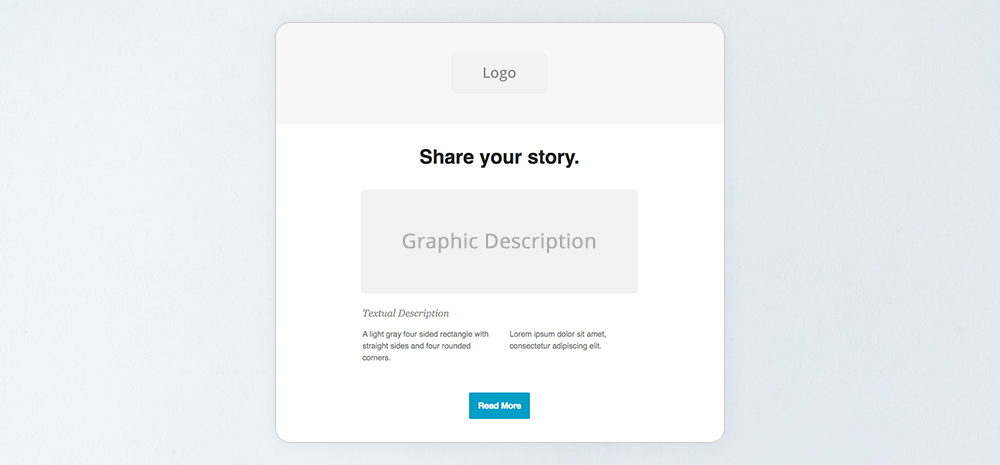Grow Your WordPress Business with Newsletters

Newsletters are among the most effective ways for brands to connect with their clients and prospects. They allow you to communicate in a simple yet affordable manner. As a marketer, I feel that newsletters stand out as incredible alternatives to other channels due to the trust factor. Newsletters are effective for businesses of all sizes and domains. They act as your personal window to your clients, employees, vendors, people who are interested in your business in general.
In this article, we will learn how to use newsletters to grow your WordPress business. I will also cover a 7 step guide to create newsletters for your firm. Buckle up to explore the topic in detail.
Why Newsletters in 2021
The simple answer is ‘returns.’ Email marketing generates an ROI of 4200%. Of course, social media marketing is getting more popular these days, but there’s more to it. Both the Social Media Marketing (SMM) and SEM landscapes are getting both overcrowded and saturated. You have to compete against tens of thousands of competitors and getting noticed is tough, even if you’re using the best WordPress SEO tools on the market. Also, a survey says that 80% of North Americans use no less than one adblocker. It reduces the effectiveness of these platforms.
Along with this, I also want to highlight that all of these activities are meant to generate ‘leads.’ To gather these leads, you have to create compelling content and convince readers to share their contact information. Emails addresses belong to the prospects that have already subscribed to you. This means that they are already interested and half-way down the sales funnel. Losing the chance to reach out to them is a grave mistake and you should avoid it by all means.
The easiest way to grow your email list with WordPress is to implement a plugin or two. This can include using a plugin to add newsletter optin forms via a popup form, optin wheel (spin to win) or a dedicated landing page.
What to do after getting your leads’ email addresses? You can’t send them marketing emails all the time or else they will mark you as spam. Not communicating adequately is also equally inadvisable. Newsletters bridge the gap between content marketing and value-driven communication with your clients and clients-to-be.
2021 is the right time for you to ramp up your email marketing campaigns or start one if you aren’t doing it currently. This will help manage your budget and reach out to your existing clients and prospects effectively. So, as a marketer what should be the first thing to come in your mind? Let us see that in the below section:
Set The Agenda and Clean Up Your Mailing List
As a rule of thumb, any activity is started only after its purpose is defined. I suggest you should start by setting the desired outcome. What do you want people to do after reading your piece of communication? Do you want them to use a referral code, discount coupon, or tell them about an upcoming event? Setting a clear agenda will help figure out the direction in which you need to go.
Also, one of the most important pieces of advice I have for you is to clean up your mailing list. Remove subscribers that are inactive, result in bounced emails or are otherwise unengaged. This is especially beneficial so you can gear your newsletters according to what your audience likes. You can expand the recipients gradually for getting more engagement out of it.
Here, I am listing down 7 steps to creating great newsletters for your firm. You can use these principles for almost any type of newsletter.
7 Step Guide To Create Flawless Newsletters Every Time

Before we move ahead, you should know that newspapers differ a lot from other content forms. They depend on the textual content to convey value while banking upon visuals for aesthetics. They should lead readers into clicking the CTA button as soon as possible. In a way, it is the art of curating multiple small content elements to quickly trigger a desired action. Let us start with the design process:
Step 1: Start With The CTA
Yes, you read it right. Your Call To Action (CTA) button should be at the center of your efforts. It can be free coupons, referral codes, links to purchase items/services, or RSVP to events in their city. You can also ask for recommendations and gather feedback. Knowing what the audience needs to do will help in shaping the particulars that will compel them to do so.
It’s easy to add a call to action to WordPress. With the help of a page builder, shortcode, form or optin plugin you can have a CTA on your site in minutes.
Step 2: Create A Crisp Subject Line
This is the first thing recipients will see. You have to make it like the one you want to read personally. Most of us decide whether to open a mail or not within a matter of a few milliseconds. Thus, there a few ways to ensure that your subject line stays relevant:
- Avoid generic subject lines.
- Keep it limited to 5-7 words. This also improves the experience of people using cell phones.
- It should not look like: HOW IOT IS AFFECTING WORKPLACES or HoW Are YOu DeaLING WiTH CoVID’19. Always keep capitalization normal.
- Avoid using too many emojis.
- Don’t try to use exclamation marks unless you are offering prizes or giveaways. This leads to getting marked as spam in most cases.
In a nutshell, don’t give your subscribers a reason to skip your newsletter. Make it worthy of clicking and set expectations right there.
Step 3: Add A Visual Side Of The Story
Graphics are only second to the subject line when it comes to capturing your audience. I recommend using either free stock photos or royalty-free images to avoid any copyright infringement issues. The image needs to be relevant and appealing. Consider using captions for both telling the story and saving space for textual content. You can also use relevant colors to match the purpose of sending the news or simply match your brand color. There are plenty of free online tooks your can use to create images for your WordPress blog and for your newsletters.
Remember that our brain processes graphics 60,000 times faster than the textual data. A good example is given below:

Step 4: Write The Email Body Like A Bodybuilder
I am not at all kidding here. Classic bodybuilding was all about aesthetics that were well proportioned. Your newsletter too needs to look proportional and pleasing to the eyes. Some qualities you need to include are:
- Short lines and short paragraphs.
- Appropriate use of headers.
- If possible, distribute the content in blocks.
- Highlight tips, useful information, and messages.
- Align to the right if it is too lengthy, for better visibility.
- Maintain coherence with previous communication if applicable.
- Optimize for all devices and screen sizes.
This results in a clean, concise, and compelling appeal to the structure. Of course, putting only relevant information is a must but using the right language tone is equally necessary. Try staying polite, a bit casual but not unprofessional. The body shall contain all relevant data regarding why one needs to click the CTA. Keeping it valuable and educational will go miles for you. Tools come handy in the form of plugins for email marketing as in the case of WP sites while CRMs for others. They aid in building visually appealing email templates effortlessly.
Step 5: Cut The Fat
After you assemble the newsletter, you will always find some portions that don’t add enough value. You can paraphrase them or omit those parts as required. Cutting the fat is essential to keeping your final content crisp and read-worthy. Go through it multiple times as you proofread and edit. This will only result in a better, captivating copy.
Step 6: Choose The Right Send Off Time And Frequency
This is the technical part of reaching out to the masses. They help in defining the right strategy. You need to decide the right frequency and send off time if you want maximum CTR. Like a lot of marketers, I also agree that sending the newsletter on a Monday or Tuesday morning is the best timing. Subscribers will most probably read it while going through work emails.
Again, this is subjective. If you are a restaurant or cinema hall owner, Fridays could be more favorable for you. You can go for any frequency such as daily, weekly, monthly, or even yearly in extreme cases. All you have to ensure is that don’t overwhelm the readers to the point they unsubscribe.
Step 7: Measure And Level Up
No panacea exists for writing newsletters. You have to learn from your previous campaigns about what excites your audience and what doesn’t. If you run a WordPress site, you can easily install an A/B Split testing plugin. Or depending on the newsletter service you use, split testing and analytics tools might be built into your plan.
You can also use Google Analytics Tools which is easy to setup using the Google Site Kit plugin. Measuring engagement is a continuous process as people change their interests over a while and trends too keep changing. Nonetheless, having the right tools will help level up your game and stay relevant.
How Newsletters Help In Build A Strong Rapport
Firstly, once subscribers click, they are taken straight to your content without any competitors to part their attention with. Adding to it, more people are reading emails for as long as 18 seconds which is higher than the past. You can share tips, industry news, or educational content; whichever your clients would love to see but don’t get regularly from other firms. I have always felt the need of aligning communication with a strategy to build rapport. More than half (61%) of the consumers prefer brands contacting them over emails. You can create a campaign by dividing the content of your newsletters or sending the promised gifts/coupons as per the schedule.
There is always some amount of trust between you and your readers since they gave you their email addresses. This is by far, the biggest factor that kick starts a series of personalized interactions. Personalized emails receive 6X the normal transaction rates. You can gradually ramp up engagement as you go ahead using analytics tools and building an intimate touch with your subscribers.
The SEO Impact Of Newsletters
Newsletters are game-changers for your SEO. Your subscribers can save them and this is one of the biggest advantages for your marketing efforts. This will indirectly up your SEO ranking as it drives regular traffic to your website and encourages people to engage with your brand on other platforms. Providing ‘share buttons’ to social media sites is a great way of getting SEO juice as mentions on these platforms pass positive signals to search engines like Google. All of these come at a very affordable price and this is something you cannot ignore for sure.
Over To You
We can conclude that engaging with your consumer base becomes easy through newsletters without sounding too pushy. Cost considerations also act in its favor. Building engagement over time is no lesser than an asset since you don’t need to heavily rely on spending big bucks to get visibility. They also drive recurring revenue far better than other channels in the long term. That being said, it’s your personal platform. You have complete freedom over its looks and content without competitors hovering around it. These are enough reasons for you to leverage newsletters to grow your business in 2021 and beyond.




Comments
No comments yet. Why don't you kick off the discussion?